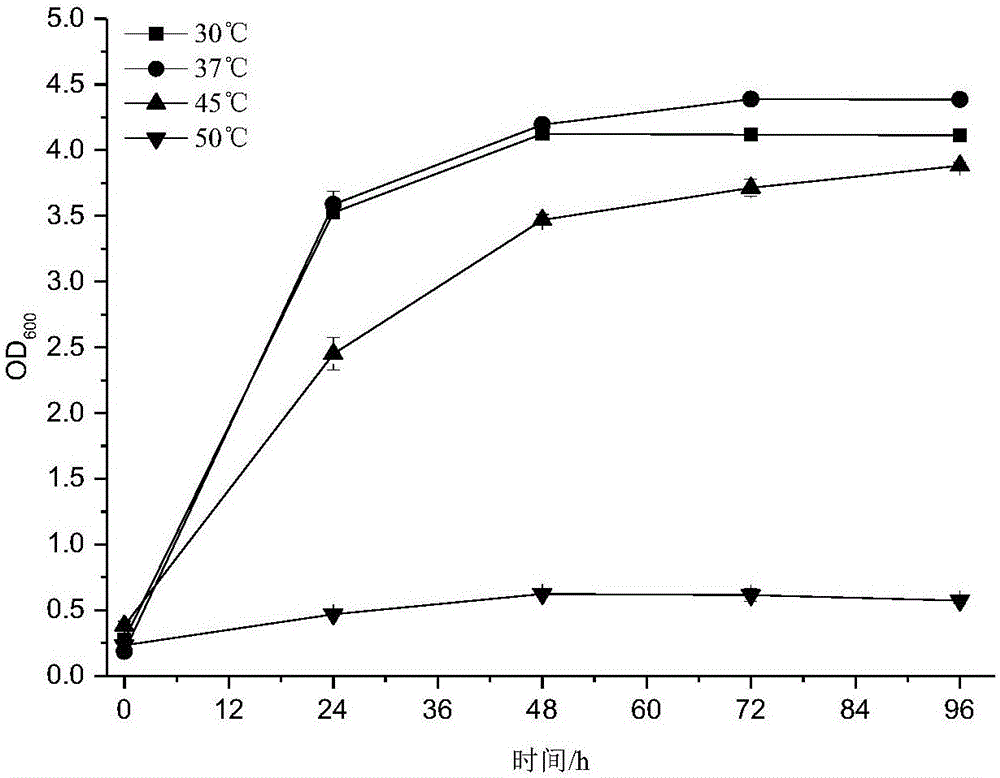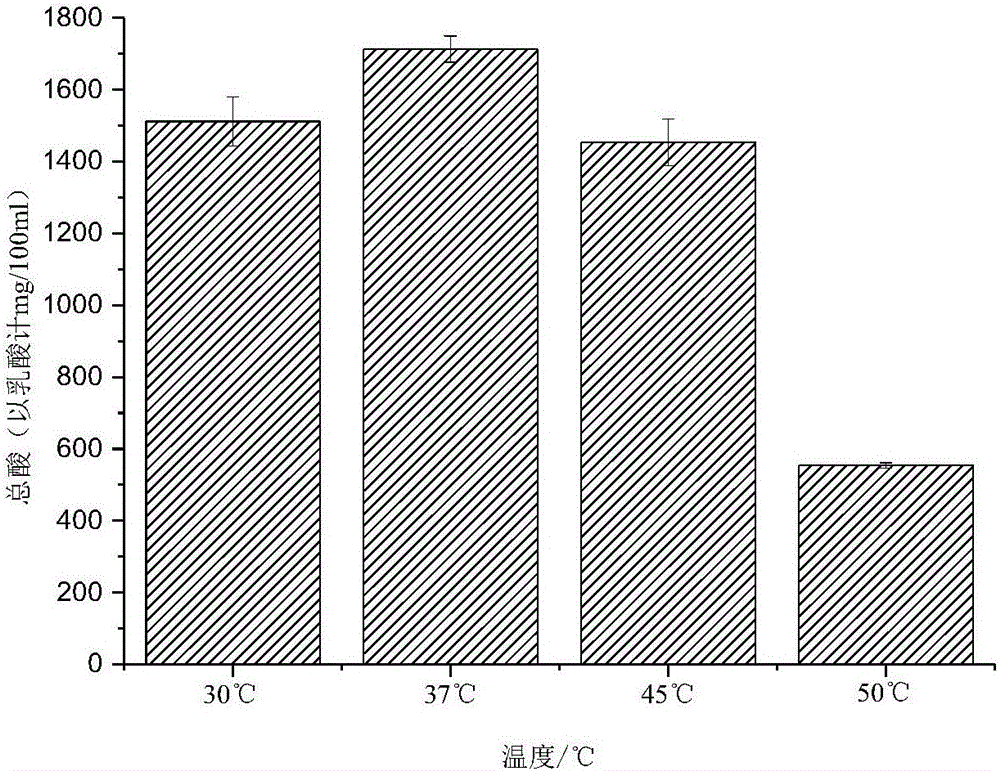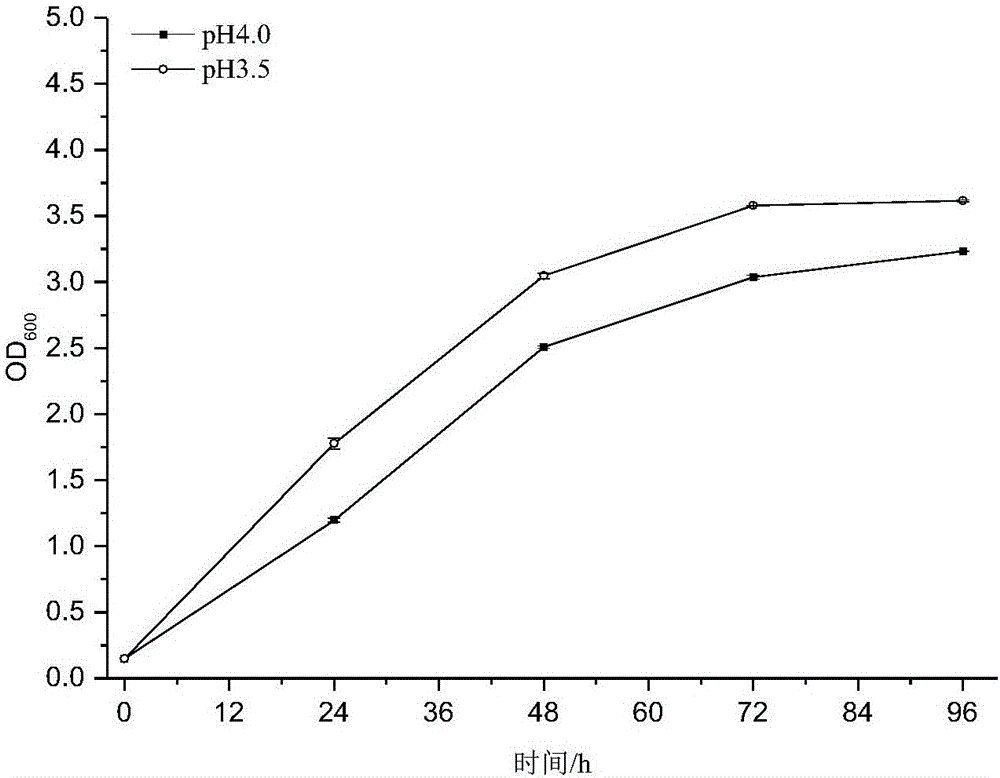Method for strengthening traditional solid fermentation of vinegar by mixed agent and application of mixed agent
A technology of solid-state fermentation and mixed bacterial agents, which is applied in the field of Lactobacillus helveticus, can solve the problems such as the reduction of lactic acid bacteria and the inability to fully exert its functions, and achieve the effects of round taste, shortened fermentation cycle, and improved health value
- Summary
- Abstract
- Description
- Claims
- Application Information
AI Technical Summary
Problems solved by technology
Method used
Image
Examples
Embodiment 1
[0032] Example 1: Obtaining a strain of Lactobacillus helveticus and preparation of a mixed bacterial agent.
[0033]Obtaining of Lactobacillus helveticus CGMCC No.12062:
[0034] (1) Preliminary screening of bacterial strains: from the vinegar unstrained spirits in the fermentation stage of Shanxi mature vinegar, use the double-layer plate method, dilute and spread on the MRS medium plate of pH 4.0 (using lactic acid to adjust the pH value), at 37 ° C and 45 Cultivate at two temperatures and pressures for 48 hours, select colonies that can grow normally at 45°C and have transparent circles, and perform multiple streaking and purification until the microbial colonies in the petri dish are completely consistent in shape, pick a single colony into the MRS medium, and culture After 12 hours, the primary screening strains were obtained, and the strains were preserved in glycerol tubes, frozen in a -20°C refrigerator for one day, and placed in a -80°C refrigerator for long-term pre...
Embodiment 2
[0049] Embodiment 2: Add the mixed bacterial agent 1 in the alcoholic fermentation stage in the vinegar fermentation process.
[0050] (1) Preparation of mixed microbial agent 1: Lactobacillus helveticus (CGMCC No.12062), Hansenula anomalies (CCTCC AY 93050, purchased by commercial institutions) and Bacillus amyloliquefaciens were prepared respectively according to the preparation method of the mixed microbial agent described in Example 1 Bacillus (CCTCC AB 205140, purchased by commercial institutions) is mixed according to the mass ratio (1-2): 1:1 to form the mixed bacterial agent 1.
[0051] (2) Raw material processing: crush sorghum into 6-8 petals, add warm water, cook for 1.5-2 hours, add 62.5kg of Daqu flour (purchased from factory) per 100kg of sorghum and mix well.
[0052] (3) Alcoholic fermentation: put the above-mentioned raw materials into a wine vat (about 1.5m in height), and carry out alcoholic fermentation with dilute mash. The first 4 days of open fermentatio...
Embodiment 3
[0063] Embodiment 3: Add mixed microbial agent 2 in the acetic acid fermentation stage in the vinegar fermentation process.
[0064] (1) Preparation of mixed bacterial agent 2: according to the preparation method of the mixed bacterial agent described in Example 1, respectively prepare the bacterial agents of Lactobacillus helveticus (CGMCC No.12062) and Pediococcus lactis (CICC No.10346, purchased by commercial institutions) , mixed according to the mass ratio of 1:1 is the mixed bacterial agent 2.
[0065] (2) Raw material processing: crush sorghum into 6-8 petals, add warm water, cook for 1.5-2 hours, add 62.5kg of Daqu powder per 100kg of sorghum and mix well.
[0066] (3) Alcoholic fermentation: put the above-mentioned raw materials into a wine vat (about 1.5m in height), and carry out alcoholic fermentation with dilute mash. The first 4 days of open fermentation, the last 8 days of sealed fermentation, a total of 12 days. The fermentation workshop uses an air conditione...
PUM
| Property | Measurement | Unit |
|---|---|---|
| Acidity | aaaaa | aaaaa |
Abstract
Description
Claims
Application Information
 Login to View More
Login to View More - R&D
- Intellectual Property
- Life Sciences
- Materials
- Tech Scout
- Unparalleled Data Quality
- Higher Quality Content
- 60% Fewer Hallucinations
Browse by: Latest US Patents, China's latest patents, Technical Efficacy Thesaurus, Application Domain, Technology Topic, Popular Technical Reports.
© 2025 PatSnap. All rights reserved.Legal|Privacy policy|Modern Slavery Act Transparency Statement|Sitemap|About US| Contact US: help@patsnap.com



